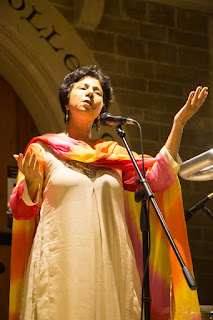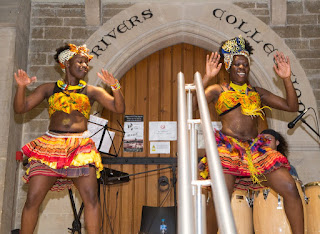This month sees the launch of a new app, introducing the four major Oxford University Museums in English and Chinese. The app, developed by the 2017 Leadership Program Team from UESTC (University of Electronic Science and Technology of China) and in consultation with the Oxford Museums, is a free tool designed to make knowledge about the collections in Oxford more accessible to Chinese speakers. Oxford receives more than 13,000 visits from Chinese tourists each year, and Oxford University is home to more than 1000 Chinese students. The app is available on both Google Play and Baidu – take a look!
Facilitated by Summit Education Enterprises (SEE) and working closely with technical, curatorial and communications staff from the University, the students were able to produce the app in just one month in summer 2017. This partnership has proved that a project with social engagement, international and interdisciplinary aspects can – with careful planning, due care and commitment - can be an exciting opportunity to create something surprisingly meaningful, innovative and beneficial to all stakeholders within a limited length of time. This blog describes the process of collaboration between the three organisations and the development needed to create this product in just four weeks. How did we get on?
To help the students apply and develop their knowledge and skills in electronic science and technology (UESTC is ranked No. 1 in those subjects among all the universities in China) and gain meaningful social engagement experience, SEE proposed to work with GLAM for the students to design a Chinese language mobile application for marketing the Museums among Chinese audiences overseas and here in the UK. Chinese visitors comprise a steadily growing proportion of overseas visitors to Oxford and its cultural institutions, mirroring a general rise in Chinese tourism to the UK, and there is a year-on-year increase in Chinese visiting scholars and students at the University. The potential of such a project, therefore, was easy for us to appreciate. So how did we start?
 |
UESTC students with Dr Yi Samuel Chen (Director and Founder of Summit Education Enterprise as well as a Researcher at the University of Oxford). © Summit Education Enterprises
|
Week 1
The first steps involved introductions. Prior to the arrival of the students, Susannah Wintersgill (GLAM Director of Communications and Marketing) and Ted Koterwas (Website and Mobile Applications Team Leader, University of Oxford IT Services) already sent the students introductory materials about the Museums and the technical aspects of the development of existing digital resources. Once the students arrived in Oxford, The GLAM Director of Communications and Marketing, Susannah Wintersgill, gave an overview of what GLAM is and does, then representatives from the four museums,Ashmolean, Pitt Rivers Museum (PRM), Museum of the History of Science (MHS), and Museum of Natural History (MNH). All meetings were scheduled at the PRM so students also got a tour of the galleries there and the most popular exhibits. This process also helped familiarise the students with some of the values of the University of Oxford’s commitment to widening education that ought to be reflected in the digital resource – scholarly excellence, inclusivity and diversity, and free to access. Ted Koterwas and his colleague Andy Haith from our Mobile Applications Team at the University of Oxford’s IT Services also provided close guidance to the students on the benchmark for technical and user acceptability. And the project management team of SEE, especially Sarah Bruhn, coordinated and oversaw the entire process to ensure the smooth operations and cohesion of the project.
 |
| PRM Curator Helen Adams gives a gallery tour to the students. © Summit Education Enterprises |
Next was a discussion on what the ‘digital resource’ would be. Three GLAM members – PRM, MHS and MNH – had recently launched an audio guide in Mandarin but needed help promoting it. The students shared their cultural knowledge of how Chinese people search for and consume information using their smartphone, and we agreed an app would be a good way of packaging information in one place, having links to social media (especially WeChat), and incorporate existing Museum content such as the audio guide and collections images.
 |
| A presentation includes evidence of WeChat statistics © Pitt Rivers Museum |
Week 2
After receiving a brief with milestones and important clauses about IP and logos, the students undertook research on aspects of the Museums’ collections with both actual visitors and potential visitors to find out which things interested people and why. They also did some surveying on issues unique to the individual museums. For example, the Pitt Rivers Museum’s ground floor is much busier than the top floor – how could we encourage visitors to go upstairs?
The data was revealing – for example, it seemed the most appealing aspect of the Pitt Rivers Museum’s collections were ‘Textiles and Clothing’ and that better signage and an assurance of the safety of the floor would encourage people to the Upper Galleries!
 |
| Students undertook on-and off-site audience research © Pitt Rivers Museum |
We discussed how the app would be used and by which audience. Was it to be an in-gallery experience or a resource to be used remotely to engage with the Museums virtually and inspire a visit? The students believed it could be both...
Week 3
Following consultations with staff, including Ted Koterwas and Andy Haith from the Mobile Team , the students had self-selected into four groups focussing on content, design and technical aspects. A huge amount of work happened in this week involving the final draft of wireframes and UX. These were presented to staff and feedback focussed on user tools and services such as the ability to switch between English and Chinese; the inclusion of information about toilets, shops and cafes; and gallery plans that matched those available in the Museum.
 |
| Students split into groups to develop technical and design elements © Summit Education Enterprises |
Week 4
The students had one more week to tweak the designs, test the app and present the final app ready for launch. The result is a simple, easy-to-use, and yet comprehensive user interface which presents the user with a choice of four museums, each presented in a consistent way offering highlight object tours, resources and facilities. Each museum has its own designated colour within a contemporary design palette and easily recognisable with its branding and logo.
The students achieved an incredible amount in just one month. Together they had created a digital resource containing 110 pages of 30,000 words and 200+ images, backed up by more than 200 programming files and 2.46459 line codes.
 |
| Screenshots of the finished app |
The app is already available on Google Play and on Baidu (major Chinese web services provider). It’s FREE so take a look!
We are thrilled with the outputs of this project and have been constantly surprised and impressed with the aptitude, enthusiasm and adaptability of the students, not just because of their obvious technical knowledge in terms of programming and graphic design, but also because we were having to communicate quite complex ideas to each other in English.
We look forward to promoting the new app on various channels (not least the University of Oxford’s WeChat account) and running analytics on its marketing, take-up and use among Chinese visitors.
Helen Adams
Project Curator and Engagement Officer, Pitt Rivers Museum


















